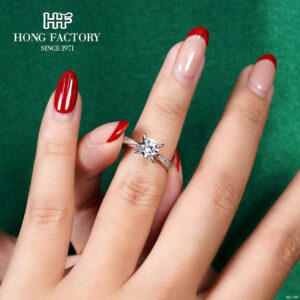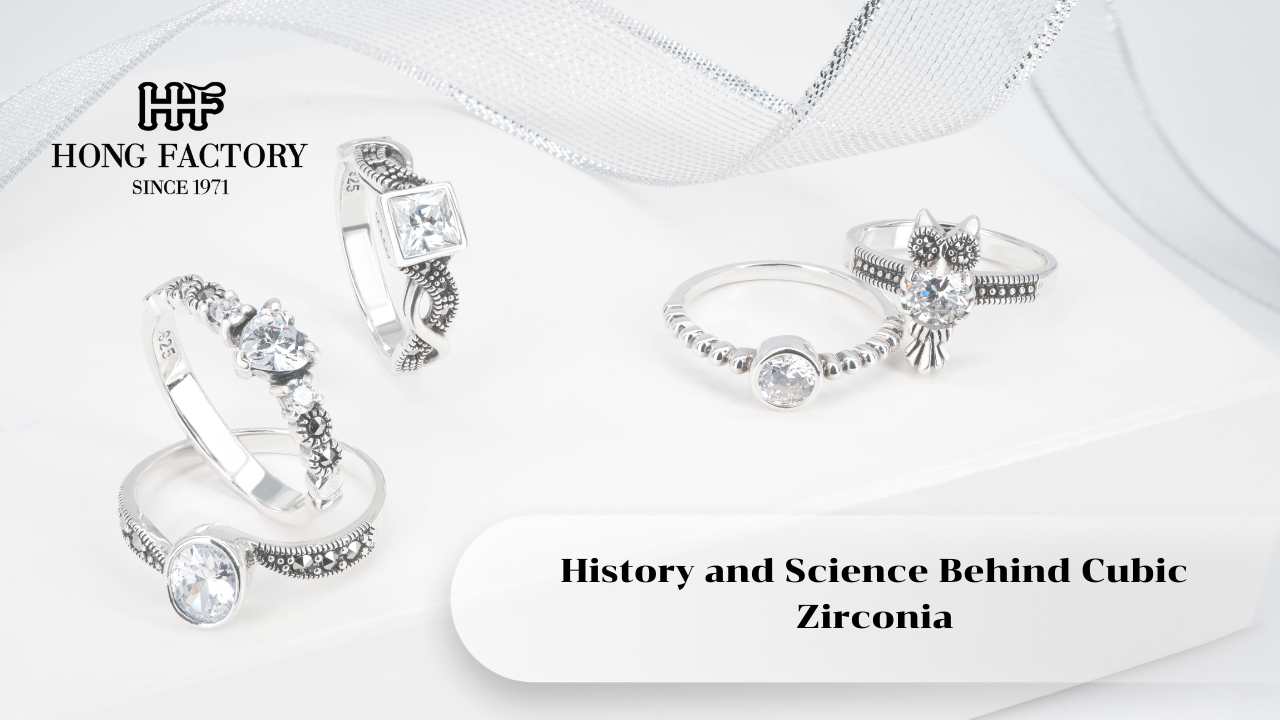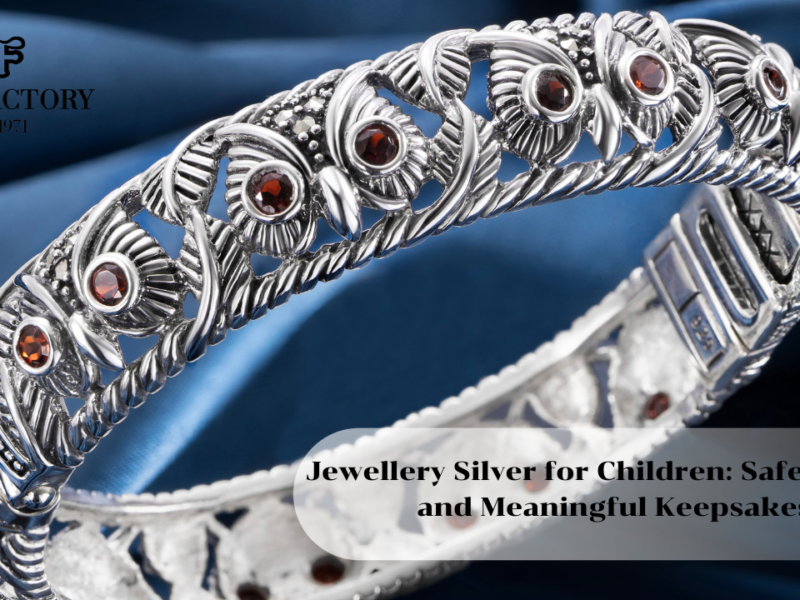In the world of gemstones, few creations have had as much impact as Cubic Zirconia. Known for its remarkable brilliance and affordability, this man-made gemstone has revolutionized modern jewelry design. But beyond its beauty lies a story rooted in scientific discovery, innovation, and human ingenuity. Understanding the history and science behind Cubic Zirconia offers insight into how it became one of the most popular diamond alternatives in the world. Marcasite stone
The Origins of Cubic Zirconia

The story of Cubic Zirconia begins not in jewelry, but in the laboratory. Scientists first discovered natural cubic zirconia crystals in the 1930s, though they were extremely rare and unsuitable for jewelry use. The mineral, composed of zirconium dioxide (ZrO₂), naturally crystallizes in the monoclinic form. However, under specific conditions of high temperature and controlled pressure, it can form in the cubic phase—the same structure that gives diamonds their brilliance.
It wasn’t until the late 1960s and 1970s that Russian scientists successfully synthesized Cubic Zirconia in a lab. Using advanced techniques like the skull melting process, they were able to stabilize the cubic form of zirconium dioxide, producing large, flawless crystals. These synthetic gems quickly caught the attention of jewelers around the world for their diamond-like appearance and exceptional optical qualities.
The Science Behind Cubic Zirconia
Cubic Zirconia is a crystalline material composed of zirconium dioxide stabilized with small amounts of other oxides such as yttrium or calcium. These stabilizers allow the crystal to maintain its cubic structure at room temperature, preventing it from reverting to its natural form.
The production process involves heating the raw materials to over 2,700°C in a high-temperature furnace. The result is a flawless, colorless crystal that mimics the optical characteristics of a diamond. Cubic Zirconia has a refractive index of about 2.15, slightly lower than diamond’s 2.42, but still high enough to produce an impressive sparkle. It also exhibits a higher dispersion rate, meaning it produces more colorful flashes—often referred to as “fire.”
From a scientific perspective, Cubic Zirconia represents a fusion of art and technology—where chemistry and craftsmanship come together to create beauty that rivals nature.
Why Cubic Zirconia Became a Diamond Alternative
The rise of Cubic Zirconia in the jewelry market is a direct result of its unique combination of beauty, affordability, and accessibility. As consumers began seeking ethical and budget-friendly alternatives to diamonds, CZ quickly gained popularity. Here’s why it became so beloved:
- Exceptional Brilliance and Fire
Cubic Zirconia’s optical performance is extraordinary. Its high dispersion rate gives it a rainbow-like sparkle that many find even more captivating than diamonds.
- Perfect Clarity
Because it’s created in a laboratory, Cubic Zirconia is virtually flawless. Unlike natural diamonds, which often contain inclusions, CZ offers a perfectly clear appearance that appeals to those who appreciate precision and symmetry.
- Affordability and Accessibility
Cubic Zirconia provides luxury without the price tag. It allows anyone to enjoy elegant, diamond-like jewelry without spending thousands of dollars.
- Ethical and Sustainable
Unlike mined diamonds, which may raise environmental or ethical concerns, Cubic Zirconia is entirely man-made. Its production minimizes ecological impact, making it an ideal choice for eco-conscious consumers.
The Evolution of Cubic Zirconia in Jewelry Design

Since its introduction in the late 20th century, Cubic Zirconia has become a cornerstone of modern jewelry design. Jewelers embraced it for its versatility and beauty, using it in everything from engagement rings and pendants to earrings and watches. Designers also appreciate its consistency—each stone can be produced with exact specifications, ensuring uniformity in color, cut, and brilliance.
Advancements in manufacturing technology have further enhanced the quality of CZ stones. Today, treatments such as diamond-like carbon (DLC) coatings and new cutting techniques increase durability and improve optical performance, allowing Cubic Zirconia to rival even the finest natural gems.
The Symbolism and Meaning of Cubic Zirconia
Beyond its physical qualities, Cubic Zirconia carries symbolic meaning. It represents clarity, transformation, and modern innovation. As a gemstone born from science rather than nature, it stands for human creativity and progress—the ability to craft beauty with purpose. Many people wear Cubic Zirconia jewelry not only for its appearance but also as a reminder that true value comes from meaning, not material cost.
In spiritual interpretations, Cubic Zirconia symbolizes purity, positivity, and emotional balance. Its bright sparkle encourages confidence and inner strength, aligning perfectly with those who embrace modern elegance.
How Cubic Zirconia Changed the Jewelry Industry
Cubic Zirconia has democratized luxury. It bridged the gap between fine jewelry and affordable fashion, allowing people from all walks of life to experience brilliance and craftsmanship once reserved for the elite. This accessibility redefined jewelry as a form of self-expression rather than just a status symbol.
Major jewelry brands and designers now incorporate CZ into their collections, recognizing its growing demand among consumers who value both style and sustainability. Its affordability also makes it a popular choice for travel jewelry—allowing wearers to enjoy elegance without risk.
The story of Cubic Zirconia is a celebration of human creativity, scientific advancement, and timeless beauty. From its origins in the laboratory to its global prominence in jewelry design, it has proven that innovation can rival nature’s splendor.
More than just a diamond alternative, Cubic Zirconia represents a shift in how we define luxury—where brilliance, ethics, and accessibility coexist. Whether worn as an engagement ring, pendant, or everyday accessory, it continues to sparkle as a symbol of modern elegance and the extraordinary power of science to create beauty.


